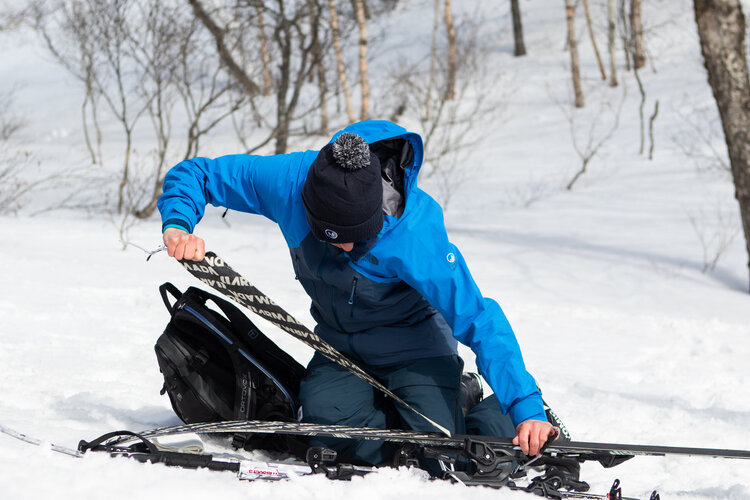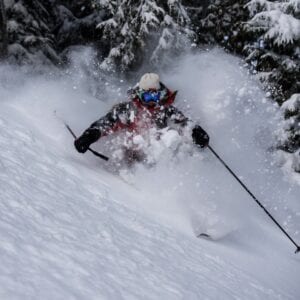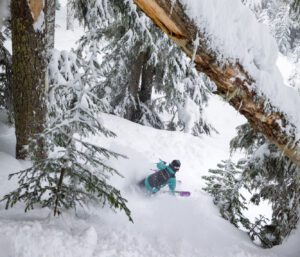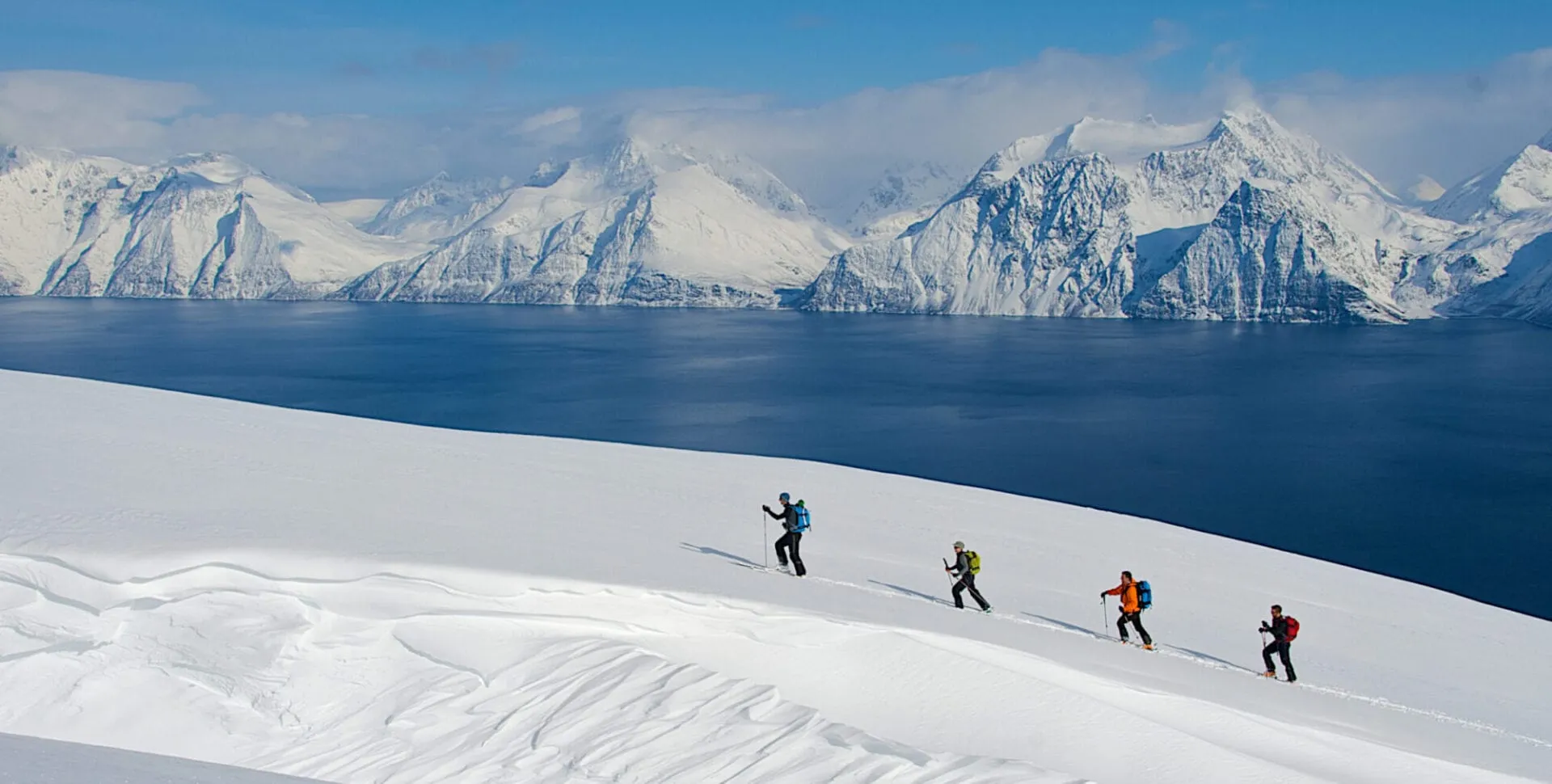Whether it’s been on your bucket list for a while or you’ve finally succumbed to the call of the powder-laden backcountry; knowing how to properly prepare to go ski touring is vital, especially if your expedition is a multi-day one.
Over the coming months, we’re preparing for the ‘Mabey Ski 4 Volcanoes in 4 Days’ challenge, held in partnership with Niseko Photography, to support Protect Our Winters (POW) – so it’s a good time to talk about the physical and mental preparation, as well as the equipment needed to spend those long but oh-so-satisfying days in the mountains.
It doesn’t matter if you have the world-famous Haute Route in your sights or a simple two-day tour planned on your next ski trip; to make the experience worthwhile and more enjoyable you must put in the training and preparation. To get you started, let’s talk about some key areas that will help with the lead up to your tour.
How is your power-to-weight ratio looking?
Your own body weight is one of the most important factors that you can optimise as you prepare for your tour. Even carrying a few extra kilos will make your life much harder on the trail – you may get away with being overweight going downhill riding through soft, fluffy powder, but once you point your skis uphill, this no longer applies. You can buy all the lightweight high-tech gear in the world but nothing will guarantee your performance like hiking at your optimal body weight.
Physical training
To train for ski touring the emphasis is on improving your cardiovascular fitness through endurance exercise. Opt for going outside and getting your hiking boots muddy on the local trails over spending long hours on a treadmill – the latter will not produce the overall conditioning you need in the mountains.
Training for endurance means you need to put in some long hours; 3 to 4 sessions per week, including at least one long session where you’re working hard for 2 hours or more so you can build up the stamina you need. If you can squeeze in a 3 to 4-hour training block, then do it.
Because the focus is on your climbing endurance, I find that mountain hiking, running and biking are all good ways to get fit. Mix it up so you stay engaged in your training, and once you feel like all the slogging uphill has become easier, pack some weight into your backpack and hike with it so you can simulate a scenario similar to when you are hiking with all your equipment. This is one of my favourite training techniques to add some load to my program.
Equipment
I’m not going to lie; ski touring is a sport for gear junkies. You can spend a lot of time and money getting the weight of your touring kit down; every kilogram counts when it comes to long multi-day expeditions. Possibly the most important piece of equipment to focus on is your boots and skis, or split-board setup if you are snowboarding. Money spent on lighter equipment is generally always worth it so make sure you opt for whatever you can afford when it comes to your hard equipment.
A lot of rental shops now carry high-end touring gear; Japan is a prime example of this, so pick the lightest setup you can find and ignore anyone who tries to tell you that you’re sacrificing downhill performance by doing so. Alpine touring (AT) skis and splitboards have improved a lot over the last decade, so the performance sacrifice is not that great when you opt for lightweight setups. On a multi-day ski touring expedition, you will spend 95% of your time in hiking mode. You do the math.
To take on a multi-day tour you will need to invest in a decent backpack as a simple ‘shovel pack’ that most guiding operations give their guests will not be sufficient to carry everything you need for the day. A 30 to 40-litre pack will give you ample space for safety gear, skins, food, water and the extra layers of clothing that will be peeled off and reapplied as you climb, stop for breaks and descend. Make sure your pack is fitted by someone who knows what they are doing and make sure it has room for your helmet either inside or strapped onto the outside with a helmet net system.
Some must-have items for your tour:
-
Transceiver, shovel, probe; this is standard equipment that must be carried and your guide will go through this with you.
-
Lightweight, breathable thermal base layers. Wool or polyester. Go for quality as these will keep you dry.
-
An insulated jacket/layer; this layer is worn under your shell and over your base layers and it should be highly packable so it takes up minimal space in your backpack. Make sure it is warm enough for lunch stops; you will most likely be very sweaty when you stop, so you will cool down very quickly.
-
Waterproof hardshell outer layers with big armpit zips and thigh zips to allow perspiration to escape. Bib and brace hardshell pants are common among ski touring fanatics. DO NOT tour in an insulated jacket or pants – these are designed for people who sit on a chairlift in a resort, which is not you in this case so you will overheat.
-
A pair of thin gloves or glove liners for hiking. You will spend most of the day in these gloves when hiking and rummaging through your bag. It’s best if you can wear them inside your skiing gloves, thereby making them warmer so you don’t have to carry a big bulky pair with you.
-
Sunglasses. Even if there is no sun forecast these are way more comfortable to hike in; protecting your eyes and allowing perspiration to get out. Goggles go into your pack on long ascents – never on your forehead.
-
A peaked hat and/or a headband. Again; even if there is no sun, even if it is snowing – this will keep snow off your face and allow heat to escape your head as you hike.
-
A bag of mixed nuts with dried fruit and chunks of dark chocolate (that’s the ultimate recipe right there). You will need sugar and carbs to keep you going all day.
-
A decent lunch of carbs and protein, but mostly carbs. Sushi, onigiri, pasta, etc.
-
A small thermos for tea will be worth its weight in gold on the mountain. Trust me on this!
-
Energy bars. It’s best to pack more food than you think you’ll need, just in case you get held up in the mountains on your tour.
-
Always bring a small pot of sunscreen and SPF 30+ lip balm; rain, snow or sunshine – your skin will need protection from the elements.
-
A small multitool; for splitboard or binding adjustments… or any other emergencies!
Looking to get out on your first multi-day ski touring adventure? Let Mabey Ski do the hard work, we organize these trips for a living (and spend our days off organizing them too!).
Check out our heli-accessed 3 day ski touring base camp trip in Whistler, BC.









